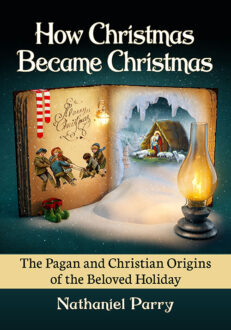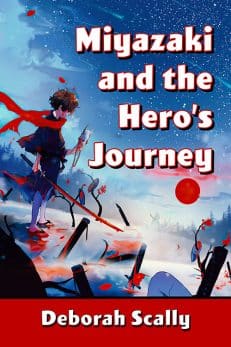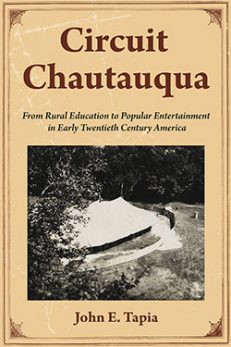Circuit Chautauqua
From Rural Education to Popular Entertainment in Early Twentieth Century America
$35.00
In stock
About the Book
In the late 19th century the chautauqua movement became a popular form of adult education and entertainment in the United States. With noted lyceum speakers (such as Teddy Roosevelt and William Jennings Bryan) and local talent, the movement spread throughout the country and was particularly popular in the rural areas of the Midwest.
An overview of the lyceum and of adult education in 19th century America is followed by an examination of the rise of the circuit chautauqua. Its popularity during the 1920s is detailed as is its demise, brought on by the Great Depression and the rise of the film industry.
About the Author(s)
Bibliographic Details
John E. Tapia
Format: softcover (6 x 9)
Pages: 240
Bibliographic Info: 27 photos, appendix, bibliography, index
Copyright Date: 2009 [1997]
pISBN: 978-0-7864-4084-9
Imprint: McFarland
Table of Contents
Foreword by Robert A. McCown 1
Preface 3
Introduction 7
I. ADULT EDUCATION IN NINETEENTH-CENTURY AMERICA 11
Lyceum 12
Permanent Chautauqua 19
Introduction of Circuit Chautauqua 25
II. THE MOVEMENT TOWARD STANDARDIZATION AND COMMERCIALIZATION 27
The Standard Chautauqua 27
Standardization and Commercialization in America 29
Growth of Circuit Chautauqua Into Big Business 30
The Selling and Promotion of Circuit Chautauqua 32
Other Circuit Chautauqua Jobs 38
“Chautauqua Week” and the Program 45
Tracing Changes in America, 1904 to 1930 47
III. BEGINNINGS IN RURAL AMERICA 48
The Country Versus the City 49
Pervasiveness of the Chautauqua Lecturer 53
Musical Features 61
Dramatic Arts 66
Children’s Activities, Magicians, and Illusionists 72
Circuit Chautauqua in Rural America 76
IV. COMING OF AGE: THE MOVEMENT INTO THE NATIONAL MARKETPLACE BEFORE WORLD WAR I 78
Factors of Expansion 78
The Lecture “Message” Begins to Lapse 82
Shakespeare, Drama, and Readers 90
The Versatility of the Music 96
Ethnic Images 100
Junior Chautauqua and “Entertainers” 105
Beyond the Rural Heartland 109
V. “MAKING THE WORLD SAFE FOR DEMOCRACY”: CHAUTAUQUA GOES TO WAR 111
Silence on the Platform 111
Chautauqua Goes to War 113
The “War Tax” 116
Lectures 117
Music and Patriotism 125
Dramatic Arts 134
The Junior Chautauqua 140
The Nineteenth Amendment 144
Chautauqua as a Gateway into the 1920s 145
VI. THE POST–WORLD WAR I ERA: FROM “THE HAND AT THE NATION’S THROAT” TO COMEDY 146
Henry Cabot Lodge and the League of Nations 146
Disarmament and Chautauqua Rhetoric 147
Bolshevism in America 149
Chautauqua Rhetoric in the Postwar Era 151
The Response to Unrest 155
Financial Troubles Begin 157
“Straight from Broadway” 160
Fading from Center Stage: Opera, Readers,
Impersonators, and Magicians 165
The Musical Variety Continues 170
The Diversity of Exhibitions for Community Youth 173
The Call of the 1920s: Entertainment and Comedy 177
VII. THE JUBILEE YEAR AND THE VESTIGES OF HOPE 178
Chautauqua Success 178
Chautauqua and Modern America 184
The Program: From Applesauce to “Leisure Time” 187
Music: Sidesplitting “Climaxes and Anti-Climaxes” 190
The Lecturer as Media Figure 191
Chautauqua as a Stepping Stone: From Late Nineteenth- to Twentieth-Century Entertainment 195
The “Spirit” of Chautauqua 201
Life After Death 203
VIII. CIRCUIT CHAUTAUQUA AS AN AGENT OF SOCIAL CHANGE 205
Appendix 209
Selected Bibliography 215
Index 219
Book Reviews & Awards
“traces the history…from its origins in nineteenth-century…to its demise in the late twenties…resurrects dozens of performers who might otherwise have been lost to posterity”—American Studies.





